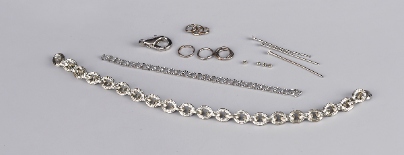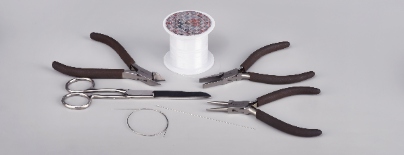Create yet another in the series of original pieces of jewelry according to our tutorial. Refined pastel colors contrast even more with spiny balls made from PRECIOSA Pip™ beads. Preciosa Ornela offers several color variants and surface finishes. Combine PRECIOSA Pip™ beads with rocailles according to your own ideas and coordinate the accessories with your wardrobe. You can also produce several spiny balls and connect them into a bracelet or hang them as earrings. Your new piece of jewelry is sure to attract the attention of your surroundings. The facets of the individual PRECIOSA Pip™ beads will reflect the light to all sides. Preciosa Ornela wishes you much enjoyment when creating and discovering new options.
She is able to switch from luxurious and extravagant fashion show pieces to the preparation of hobby projects,
Learn MoreMetal parts – platinum: 8 mm and 6 mm rings; a strong chain; a carabiner; an adjusting chain; an eye pin; a metal crimp bead

A 0.20 mm nylon line; a long thin needle; scissors; a 0.40 mm nylon line; flat nose pliers (for flattening the end of the line, closing the rings); large snipping pliers; needle nose pliers

Sewing round the individual balls. Start by sewing the band on the central, largest circumference. Then additionally sew the upper and lower sections. Sew on two rows of Pip beads (P).
Share this project with your friends
This website uses cookies
PRECIOSA ORNELA, a.s. hereby informs you that its website uses cookies You can find more information about our cookies and how your data is processed in the privacy statement. We request your consent to use cookies specified below.